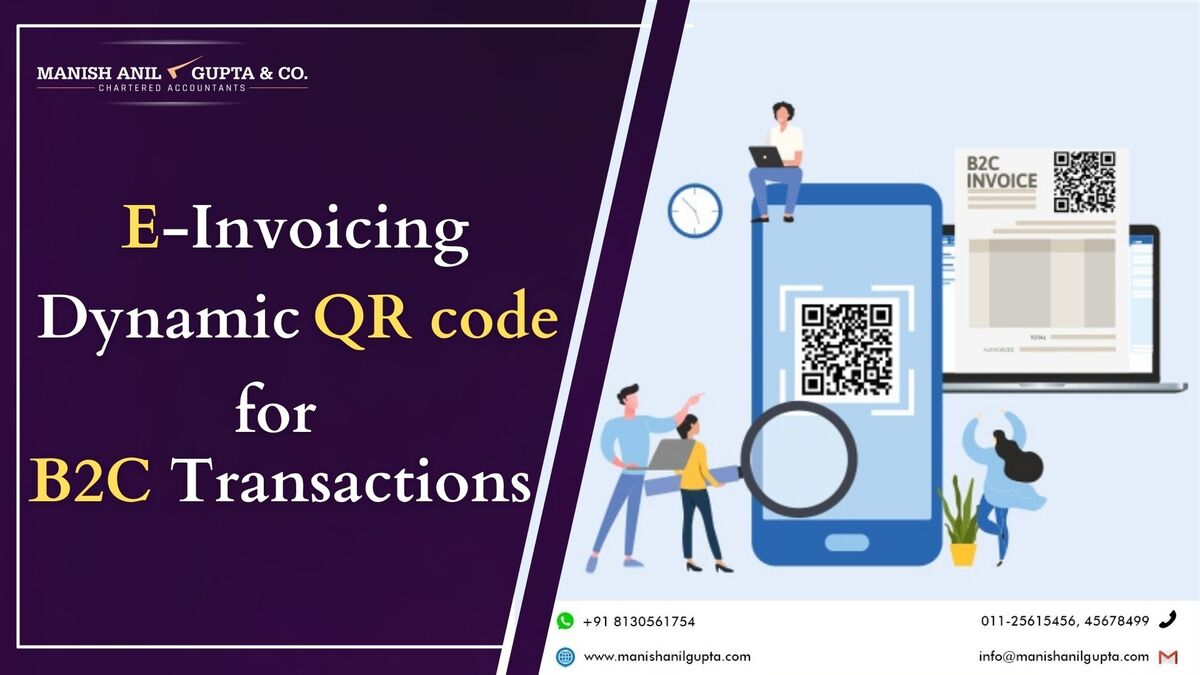Introduction
- All supplies made to unregistered persons or consumers are referred to as B2C transactions. B2C invoices are those invoices where the end-user will not be claiming input tax credit (ITC). As of now, B2C invoices are exempt from e-invoicing. However, a taxpayer is required to generate a dynamic QR code for enabling digital payments on all B2C invoices.
- The notifications have directed all taxpayers with an annual turnover of more than Rs.500 crore in any preceding financial year (starting from 2017-18) are compulsorily required to generate QR code on their B2C invoices.
Meaning
A dynamic QR code is editable and allows additional features such as scan analytics, password protection, device-based redirection and access management. It provides a less dense QR code image, which is more reliable to scan. The main motto of generating QR codes for B2C e-invoices is to promote digitalisation of payments using any UPI.
Penalty
Any failure to comply from 1st July 2021 shall attract penalty of Rs.25,000 leviable for incorrect invoicing under Section 125 of the CGST Act.
Non-Applicability
Displaying Dynamic QR Code is not applicable to an invoice where the supplier of taxable service is:
- An insurer or a banking company or a financial institution, including a non-banking financial company.
- A goods transport agency supplying services in relation to transportation of goods by road in a goods carriage.
- Supplying passenger transportation service.
- Supplying services by way of admission to the exhibition of the cinematograph in films on multiplex screens.
- The requirement to display a dynamic QR Code is not applicable to OIDAR supplies made by any registered person to an unregistered person.
- Export of goods or services to unregistered persons do not require dynamic QR code as these are considered as B2B transactions and e-Invoicing shall apply.
How to generate the QR code for B2C invoices and its contents
Under B2B invoices, QR codes are generated by the IRP and not the taxpayer. However, under B2C invoices, a taxpayer can generate QR code using their own QR code generating machines and algorithms.
A regular B2B QR code must contain the following details:
- GSTIN of the supplier
- Supplier UPI ID
- Invoice number, given by the supplier
- Date of the generation of invoice
- Bank account details of the payee and IFSC
- CGST, SGST, IGST, Cess, if any
The scanning of the dynamic QR code should allow the digital payment by the customer.
Same details are required for B2C QR codes as well, except:
- GSTIN of the recipient – As the recipient is an unregistered person, instead of mentioning his GSTIN, a taxpayer can mention his name.
- A taxpayer must include a payment reference link so that the recipient is redirected to the payment reference link.
Rationale
Implementation of QR code on B2C invoices will enable the government to get hold over B2C transactions. Also, it promotes the digitalisation of payments. One can make payments using UPI in a single go. One need not enter the amount, enter the UPI PIN/password and the payment will be made as per the amount mentioned on the e-invoice.


0 Comment